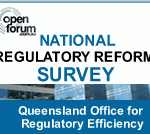Mapping out policy priorities for states and territories

State and territory governments can always do more to improve the lives of Australians but a new Grattan Institute State Scorecard shows how outcomes vary between states across a broad range of areas. In many cases, the outcomes in the highest performing states are different because their governments adopted better policies.
The scorecard forms part of new publication from Grattan, the State Orange Book 2018, which draws on 10 years of Grattan reports to outline the policy priorities which state and territory governments need to adopt to improve the lives of their residents.
The State Orange Book 2018 is designed to inform voters and influence policymakers across Australia, particularly in the lead-up to the Victorian state election in November 2018, and the NSW state election in March 2019.
It covers a wide variety of policy areas, including economic and regional development, cities, housing, and transport, school education, health, energy and budgets, taxes, and institutional reform
For example, the Health Scorecard shows Victoria has relatively good outcomes, and has improved at a faster rate, across a range of measures such as mortality, cost and waiting times, whereas South Australia and the Northern Territory lag well behind.
Other states and territories could benefit from studying how Victoria has managed its hospitals and apply best practice to improve their own outcomes.
Other policy areas require more difficult trade-offs. The Energy Scorecard, for example, shows that South Australia has more expensive electricity and more outages than other states, but it has lower carbon emissions due to its concerted effort to develop renewable sources.
A number of problems are common across the country. Per capita income has been flat for five years as the mining boom has subsided and productivity growth remains poor. State and territory governments of both parties continue to announce large infrastructure projects without doing enough homework beforehand to ensure they will deliver results and be completed on time and within budget.
The long rise in house prices has benefited middle class, middle aged home owners and foreign real estate investors, but made it harder for young Australians to get on the property ladder. Home ownership is falling fast among the young and the poor as a result, and homelessness is rising.
Despite Australia’s success in attracting foreign students to tertiary institutions, our schools are not keeping up with the best in the world. Despite growing health spending, people are waiting longer for medical treatments in most states and wholesale electricity prices have increased significantly over the past few years despite relatively little progress towards the phasing out of coal.
However the book is by no means all bad news for the country and its citizens. Many worthwhile reforms have been implemented in particular states over the past decade and could drive benefits for the whole country if they were implemented more widely.
Victoria’s hospitals cost less per patient and contribute to better health outcomes than elsewhere, for example, while Queensland’s school students learn more in Years 3-5 than children in other areas, an improvement which has gathered pace over the past few years.
The ACT has started to replace inefficient stamp duties with a much more efficient broad-based property tax and NSW has used the proceeds of recent economic growth to improve its budget position. Victoria, South Australia and the ACT have all increased the transparency of political decision-making and tightened controls over money in politics.
But every state and territory could learn from the others and do better by their citizens. State governments across Australia, but particularly in NSW and Victoria, face population pressures as immigrants flock to ever more congested Sydney and Melbourne.
The Grattan report urges them to resist political pressure to wind back planning reforms which have helped to increase housing supply, and argues they should go even further to ensure enough housing is built, particularly in established suburbs, to accommodate rapidly growing populations.
Grattan believes that NSW and Victoria should also commission work to enable the introduction of time-of-day road and public transport pricing to manage congestion in Melbourne and Sydney. All states should stop announcing transport projects before they have been analysed rigorously, and they should evaluate completed projects properly.
There are other important priorities for economic reform. All states should follow the lead of the ACT and replace stamp duties with broad-based property taxes, for example, while states should reform electricity markets to encourage reliability and reduce emissions – whether or not the Commonwealth Government cooperates.
States could also deliver their services in more efficient and effective ways. Other states should follow Victoria’s lead and reduce the overall cost and the variation in cost between public hospitals and develop more prevention programs to reduce the disparity between regional and urban health outcomes.
States should also lift progress for all students by identifying and spreading good teaching practices at the same time as strengthening the evidence base. They should also invest more in early learning for the most disadvantaged students.
Institutional reforms are needed as well and Australia’s states need to be more transparent about their long-term budget positions. While institutional accountability is improving in many states, Western Australia, Tasmania and the Northern Territory need to limit election spending, and make political donations and lobbying more transparent.
Open Forum is a policy discussion website produced by Global Access Partners – Australia’s Institute for Active Policy. We welcome contributions and invite you to submit a blog to the editor and follow us on Twitter, Facebook, Linkedin and Mastadon.











